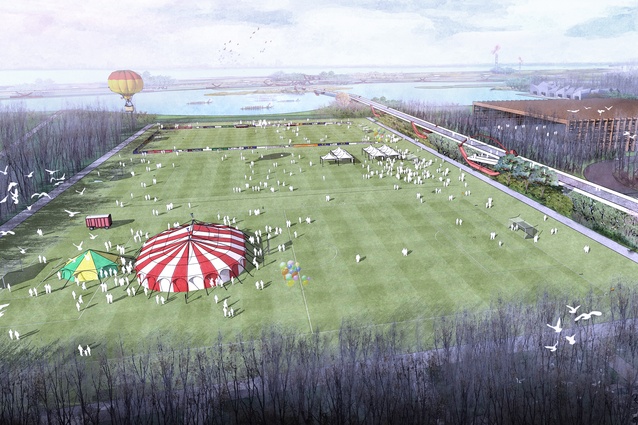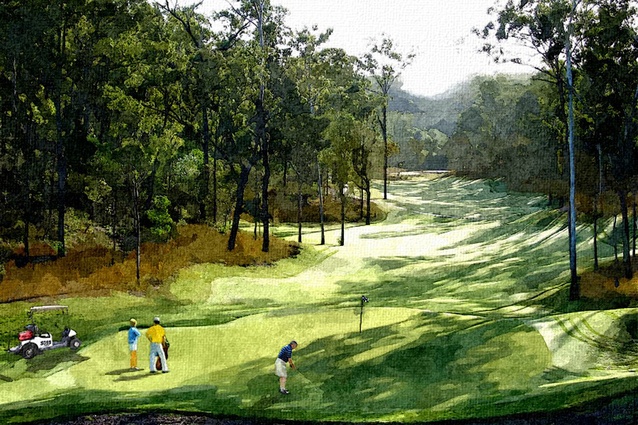Elevated design
Jiangtan Park is located on the banks of the Yangtze River, which is Asia’s longest river. The river has been used for millennia for irrigation, transportation, and sanitation. Use and pollution of the river has intensified with China’s rapid development and endemic aquatic species have become extinct in the river including the Yangtze River dolphin.
In the lower catchment of the river, there is considerable flooding infrastructure with 6,600 kilometres of flood embankments and the Three Gorges Dam, the combination of which has dramatically reduced flooding risk for 80 million people in the surrounding plains. However, ecosystems including wetlands and fish habitats have been drastically affected in the process.
Poyang Lake drains into the Yangtze River and lies to the southeast of Jiangtan Park. The lake is China’s largest fresh water lake and covers 3,500km2 on average. The lake is a major habitat for migratory birds including the Siberian Crane. However, the lake is shrinking partly due to the Three Gorges Dam.
Jiangtan Park
Jiangtan Park is an opportunity to start to address some of these significant environmental issues. The park is a slither of land between a minor embankment immediately next to the Yangtze River and a major embankment designed for one-in-100-year flood events. The existing flat landscape of the park contains flood-control bunds, fish farms, brick works, local buildings, and forestry. The concept design for the park integrates water, ecology, culture, and recreation to create a place of rejuvenation. The design was started in December 2013, and the park is still in the master planning phase.
Water
The park is slightly higher in elevation than the adjacent settlement of Xiaochi, which is low lying relative to the Yangtze River. Additional flood waters entering it from the park would compound flooding and its effects. Therefore, we designed four connected lakes and associated wetlands to retain flood water from local storms within the park.
The potential for flooding of the park has been used to inspire key aspects of the park’s design. All building platforms will be elevated above the one-in-100-year flood level and provide views over the flat landscape. In order to address possible entrapment of park users, should a flash flood occur, an elevated walkway has been designed throughout the park to provide a means of escape. The walkway also provides a way to unobtrusively experience the park and access islands for fishing and bird watching and enjoy cycling or running through the park.
Ecology
Our design for the park incorporates 80 hectares of open-water habitat for migratory birds and fish in combination with water recreation activities. A complex edge has been designed for the lakes to maximise margin habitat and provide for wading birds, fish spawning, and water treatment. The lakes will be linked with the Yangtze River, a lake at the centre of the new community, and a number of waterways in the area providing for significant aquatic habitat connectivity. The park will also include extensive linear forests, wetland habitats, and fields to provide a spectrum of ecosystems.
Culture
Our design for the park will retain existing residents’ connection with the land. Two existing temples on the site will be retained and form an integral function of the park. Existing agricultural use of the land has been used to inspire both the design language and land management for the park. Existing houses and a brick factory will be retained and refurbished to enable them to be converted into shops, accommodation and create a small retail area within the park that will surround a new performing arts theatre, providing a venue for performances of local Huangmei Opera.
Recreation
A golf course has been incorporated into the park, with nine holes designed to maximise forest habitat corridors and the back nine holes consisting of wetlands adjacent to the Yangtze River. Basketball, badminton, tennis, and soccer facilities have been provided as the main forms of recreation within park and in correlation with Chinese recreation trends. In addition, an extensive walking, running, and cycling network will provide both access and opportunities for active recreation.
Jiangtan Park will be a major environmental asset for the community of Xiaochi and will be a showcase of green development that demonstrates what can be done to address China’s environmental issues.
The Jiangtan Park concept was designed by Boffa Miskell, China. The team included: Joby Barham, Chris Bentley, Andrew King, Wendy Wang, Lin Wang, Jocelyn Han, William Kuang and Maozhen Zhou.











